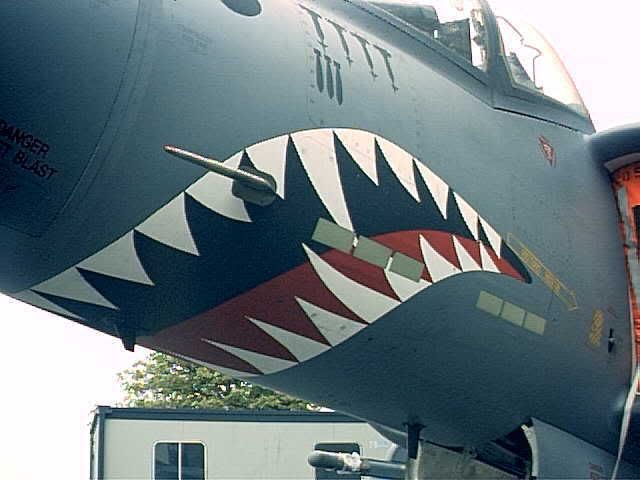Post by Bri on May 22, 2009 20:25:52 GMT
(I found the Crowood A-20 Boston book going cheap, and it set me off.....)
The first members of the Boston family had the P&W R-1830 engine, and unlike the later R-2600 powered Boston III etc. they didn't have their exhausts on the outer flanks at 3 o'clock, but down below beside the central oil cooler. Text, and SM drawings, indicate that each engine had just one exhaust stub. However ...!
I found a very old sketch I made when converting the (then new) Frog Boston back to a Havoc I (Intruder) which showed TWO exhausts, one each side of centre. I was young then, but not stupid - so where did I get the idea?
The configuration of the aeroplane naturally makes it difficult to see the inboard nacelle sides, and a search of my current library and archives turned up just two useful photos:
Squadron/Signal "In Action" No. 56, P.9, lower left, looks down on a French DB-7. The near, outer, exhaust is clearly shown and the far, inner, nacelle has an identical looking lump in the same place.
"A-20 Boston at War" p.26, top left, shows a Turbinlight conversion with the starboard nacelle head-on. The prop blade hides the presumed oil cooler at 6 o'clock, but the outer flame-damping exhaust is clearly at 7 o'clock not 9, so it's certainly an 1830 engine. There appears to be another exhaust at 5 o'clock, and a black-on-black lump of something in front of the port inner main U/C door. (Same photo in Crowood, p. 93.)
Contemporary R-1830s on F4Fs had this style of exhaust: maybe Douglas bought the whole assembly off the shelf?
Is there any confirmation out there? The later Sq/Sig issue and the Profile don't help, ditto Famous Bombers 2 and various once-over-lightly books. Has anybody got the manual, or crash photos, or a list of parts needed to convert a Boston II into a Havoc I? Or are my two fuzzy photos enough evidence?
Cheers - Bri.
The first members of the Boston family had the P&W R-1830 engine, and unlike the later R-2600 powered Boston III etc. they didn't have their exhausts on the outer flanks at 3 o'clock, but down below beside the central oil cooler. Text, and SM drawings, indicate that each engine had just one exhaust stub. However ...!
I found a very old sketch I made when converting the (then new) Frog Boston back to a Havoc I (Intruder) which showed TWO exhausts, one each side of centre. I was young then, but not stupid - so where did I get the idea?
The configuration of the aeroplane naturally makes it difficult to see the inboard nacelle sides, and a search of my current library and archives turned up just two useful photos:
Squadron/Signal "In Action" No. 56, P.9, lower left, looks down on a French DB-7. The near, outer, exhaust is clearly shown and the far, inner, nacelle has an identical looking lump in the same place.
"A-20 Boston at War" p.26, top left, shows a Turbinlight conversion with the starboard nacelle head-on. The prop blade hides the presumed oil cooler at 6 o'clock, but the outer flame-damping exhaust is clearly at 7 o'clock not 9, so it's certainly an 1830 engine. There appears to be another exhaust at 5 o'clock, and a black-on-black lump of something in front of the port inner main U/C door. (Same photo in Crowood, p. 93.)
Contemporary R-1830s on F4Fs had this style of exhaust: maybe Douglas bought the whole assembly off the shelf?
Is there any confirmation out there? The later Sq/Sig issue and the Profile don't help, ditto Famous Bombers 2 and various once-over-lightly books. Has anybody got the manual, or crash photos, or a list of parts needed to convert a Boston II into a Havoc I? Or are my two fuzzy photos enough evidence?
Cheers - Bri.





